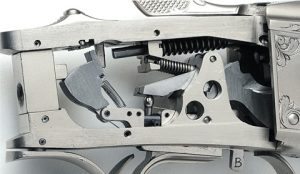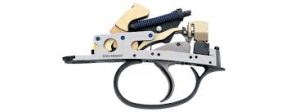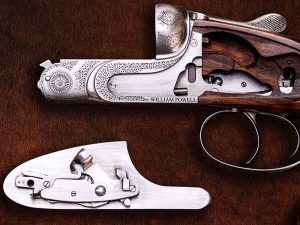How Important is Lock Time on a Shotgun Trigger?
When it comes to mastering the art of the perfect shot, there’s more to it than just aiming and pulling the trigger – it’s all about the intricate dance between the shooter, the shotgun, and the often-overlooked technical aspect: lock time. But what is lock time, and why does it matter? Let’s dive right into the world of shotgun shooting and discover why every millisecond can make or break the perfect shot.
The Countdown to Click: Why Lock Time Matters
Lock time – the interval between the final trigger pull and the ignition of the primer – may only be a matter of milliseconds, but even the tiniest fraction of time can have a significant impact on your shooting accuracy. This delicate window of time can be influenced by various factors like trigger design, firing pin mass, and spring tension. Indeed, the world of shotgun shooting revolves around these precious milliseconds, coaxing accurate shots from your weapon.

Let’s think of lock time as a ticking clock. Your target is moving, and you need to take into account both its speed and direction. As the seconds tick away, your target is moving closer to where you’ve aimed. If your lock time is lengthy, by the time the shot is fired, your target may have moved away from your aim point. Hence, the shorter the lock time, the less chance for movement and the higher your chances of hitting that target!
In essence, lock time is all about optimization. Long lock times can amplify any shooter errors, such as flinching, which can throw off your aim. Given the fleeting nature of the moving target, it’s clear that every millisecond truly matters, hence the import of a fast lock time.
Trigger Talk: Decoding Lock Time on your Shotgun
In the world of shotguns, the lock time debate is real. Some shooters argue that a longer lock time helps them stabilize their shot, while others swear by the precision of a short lock time. But what’s the science behind this timing talk?
Different types of triggers offer different lock times. Single-stage triggers are known for their short, crisp break, which results in a faster lock time. On the other hand, double-stage triggers have a longer, more complex firing sequence, which often translates into a longer lock time. The type of trigger you choose will directly impact your shotgun’s lock time, and in turn, your shooting accuracy.

It’s also worth noting the role of firing pin mass and spring tension, as these affect the speed of the firing pin and, subsequently, lock time. Manufacturers often tweak these components to optimize lock time. Therefore, understanding these aspects will help you make a more informed decision when choosing a shotgun.
When Every Millisecond Counts: The Role of Lock Time
In the grand arena of shooting sports, the line between victory and defeat can be drawn by a single millisecond. This is where lock time comes into its own. The difference between hitting your target or missing can sometimes boil down to that fraction of a second.
While it’s impossible to completely eliminate lock time, it’s crucial to understand it and work on minimizing it. Professional shooters often train to anticipate their gun’s lock time, adjusting their aim slightly ahead of the target to compensate for the delay. They also often choose shotguns with shorter lock times for competitions to reduce the chance for error.
Besides, consistent lock time allows for predictable firing, which is essential for improving accuracy. A shotgun with inconsistent lock time can throw off your rhythm and timing, making it harder to hit your target. This is why it’s vital to maintain your shotgun regularly to ensure consistent lock time.
From Pull to Bang: The Impact of Lock Time on Shotguns
From the moment your finger pulls the trigger to the moment your shot rings out, your shotgun’s lock time is doing its dance. This complex ballet of mechanics and physics plays out in the blink of an eye, but it has a profound effect on your shooting.

The right lock time can increase your accuracy, reduce the chance for errors, and even make your shooting experience more enjoyable. It can help you synchronize your movements with your shotgun, leading to smoother, more precise shots. By understanding and adapting to your shotgun’s lock time, you become more attuned to your weapon, enhancing your shooting skills.
Finally, it’s important to remember that while lock time is a critical factor, it isn’t the be-all and end-all in shooting. Other factors, such as your shooting technique, the shotgun’s fit, and the ammunition used, also play significant roles. Balancing these aspects with an understanding of lock time can really elevate your shooting success.
In the grand scheme of shotgunning, the importance of lock time is all too often overlooked. However, as we’ve discovered, this tiny fraction of time can make a huge difference to your shooting accuracy. Whether you’re a seasoned professional or an eager beginner, understanding this aspect of your shotgun can help you fine-tune your aim, enhance your shooting experience, and maybe even tip the scales in your favor when every millisecond counts. So here’s to the dance of the trigger pull, the exciting race against time that is lock time, and the unforgettable sound of success when your shotgun goes bang on target.
# # #


Comments